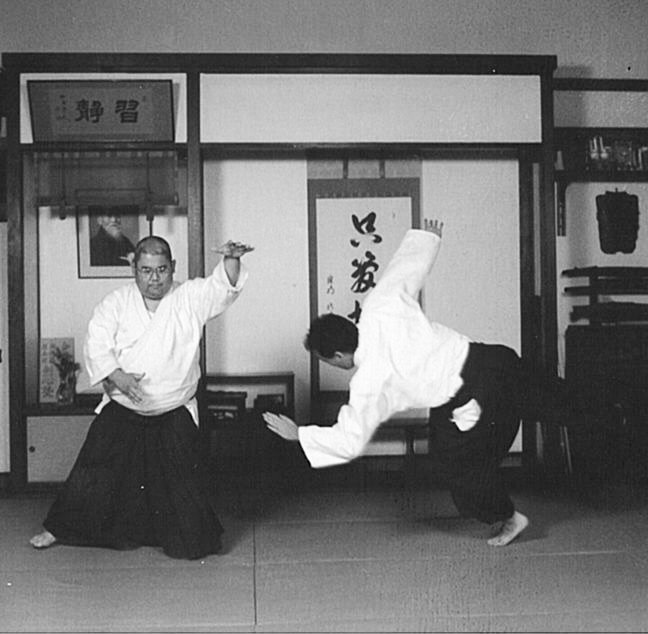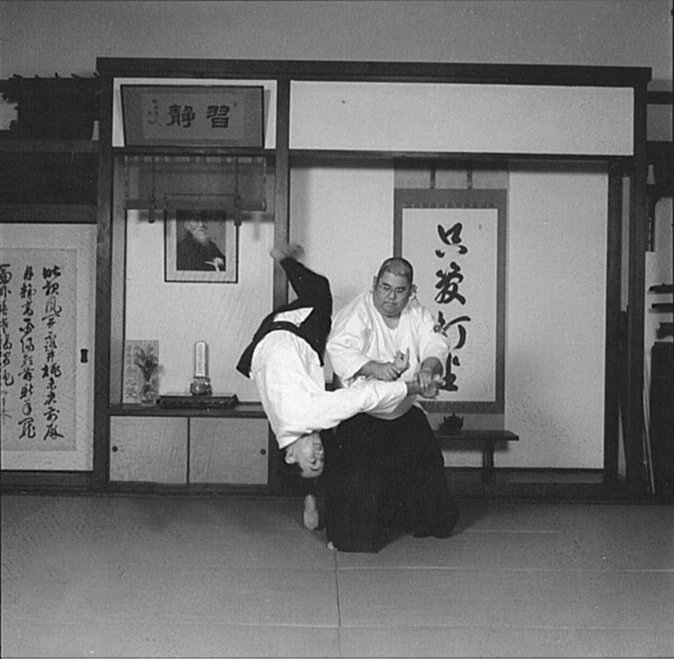The power of writing the character for “tiger” perhaps comes from this idea of kuji-in (九字印) or “nine line mudras.” In the days of old, a warrior would cut five horizontal and four vertical cuts in the air or do nine different hand mudras in order to activate a protective incantation. Typically, the character for tiger is written as (虎) and has only eight strokes because the number eight is considered good luck in Chinese. However, the character for tiger that was written by a warrior before battle had nine strokes (see kanji in picture) which made it more of a kuji-in. Each cut, stroke or mudra was supposed to represent a word in the ancient prayer: Rin Byo To Sha Kai Jin Retsu Zai Zen (臨兵闘者皆陣列在前) which means “The bravest warriors surpasses all others at the front of the battlefield.” Activating a kuji-in was supposed to give the warrior the power to “act like a tiger” on the battlefield.
There is a famous story from 17th century Japan which illustrates the tiger and the samurai spirit. In 1636, a Korean ambassador came to Japan to pay tribute to Tokugawa Iemitsu, the third Tokugawa Shogun. The ambassador brought the Shogun many beautiful gifts from Korea like fine Joseon pottery and he also presented the Shogun with one live tiger. Tigers in that time were very rare since they are not indigenous to Japan. Iemitsu and his retainers went to visit the tiger which was caged in the Fukiage Garden. Among Iemitsu’s retainers were Yagyu Muneori who was the Shogun’s swordsmanship teacher, and Takuan Soho who was the Zen teacher to both Iemitsu and Yagyu. Iemitsu was in awe at the fiercely caged tiger who was scratching and growling at anyone who dared look at the cage, but when he looked over at Yagyu, the sword master just looked indifferent. Wanting to test his teacher, Iemitsu said, “As a master swordsman, show me how you would tame such a beast.” Yagyu Munenori was known for his swordsmanship and fearlessness and so he accepted the Shogun’s challenge. As he entered the cage, the tiger began to growl loudly. As soon as the tiger let out a roar, Yagyu pulled out an iron fan, let out a loud kiai and hit the tiger on the head. The tiger immediately quieted down and retreated to the corner of the cage looking angrily at Yagyu. Everyone in the crown cheered and clapped upon seeing Yagyu’s fearlessness and samurai spirit. As everyone was congratulating Yagyu, Iemitsu looked over and saw that Takuan had a displeased look on his face. So he asked Takuan, “Do you not agree that Yagyu Sensei’s prowess is remarkable?” Takuan turned and rebuked Yagyu by saying, “That is not the proper way to handle a tiger.” Thinking that Takuan would back down, the shogun humorously said “Then, please show us how it should be done.” Without hesitation, Takuan stood up took a single breath to center himself and calmly entered the cage. The tiger was still angrily sitting in the far corner of the cage when Takuan entered. Calmly, Takuan walked up to the tiger, rolled up his sleeves and extended his hand. At first, the tiger shifted and began to growl when Takuan outstretched his hand, but sensing no threat from the monk, the tiger relaxed and began to lick his palm. Takuan returned the tiger’s affection by stroking his nose. The crowd gasped and were quietly in awe of Takuan’s calm taming of the tiger. As Takuan left the cage, he turned to Yagyu and said, “While your approach was effective, you have created an enemy for life, but I have created a new friend.”
The samurai spirit is not one solely focused on killing. Samurai of old used to talk about the true spirit of warrior being bushinonasake (武士の情け) or “Samurai compassion.” A samurai is supposed to be a person capable of great brutality but that propensity for violence should be balanced out with compassion. A samurai fights and maybe even kills because that is their job but that doesn’t mean that they should enjoy hurting others.
That is why Yagyu Munenori and Takuan Soho’s approaches to the tiger are supposed to represent the two sides of the mindset of the warrior. A warrior is supposed to be a person who embodies strength and courage in the face of adversity but they must also meet that adversity with a sense of calmness and execute their duty with reserve and compassion.
A samurai calmness comes from their understanding of hikarakuyo (飛花落葉) or “impermanence.” They have resigned themselves to dying or in other words they actively embrace what the common person chooses to ignore. This doesn’t mean that they were apathetic or took death lightly. On the contrary, knowing that they were going to die, they held life in high esteem. The samurai mindset understands that life is impermanent. Hikarakuyo literally translates as, “blossoms fall and leaves scatter” and deftly paints this picture of life being beautiful but fleeting.
The tiger is the perfect metaphor for 2022. The global pandemic has brought us face to face with impermanence. Nothing is guaranteed to us so we must make the most out of the time that we have left. 2022 could be our best year ever or it could be our worst. Nobody knows which way it will go. The uncertainty is as uncertain as the mood of a tiger. Thus, our approach should be to engage it with the fearlessness of Yagyu but also with the calmness of Takuan. We cannot change or control whichever way 2022 will come to be. We can, however, control how we approach it. Business leadership expert Brian Tracy said, “You cannot control what happens to you, but you can control your attitude toward what happens to you, and in that, you will be mastering change rather than allowing it to master you.” The tiger reminds us that we too must face adversity with strength and courage but most of all with calmness.
























